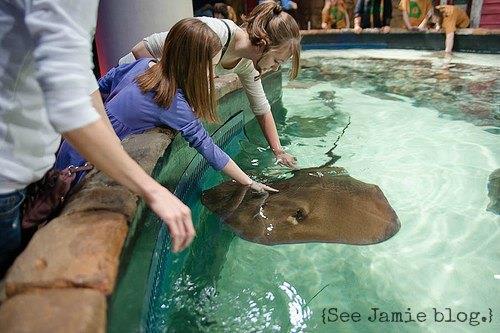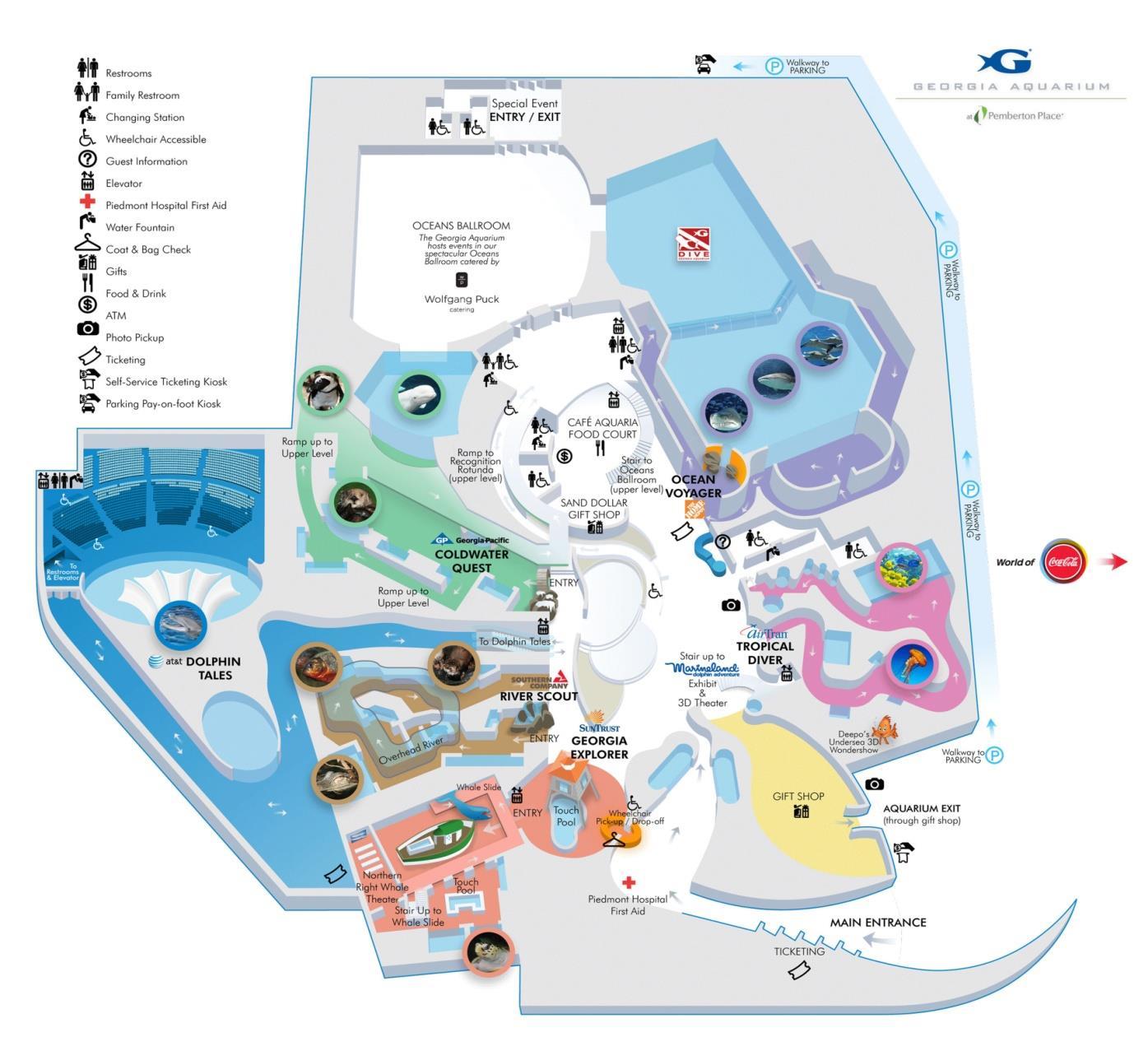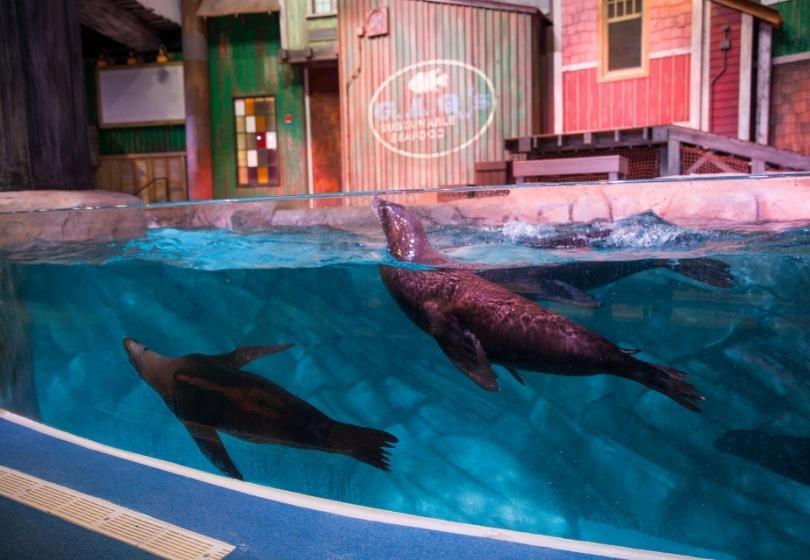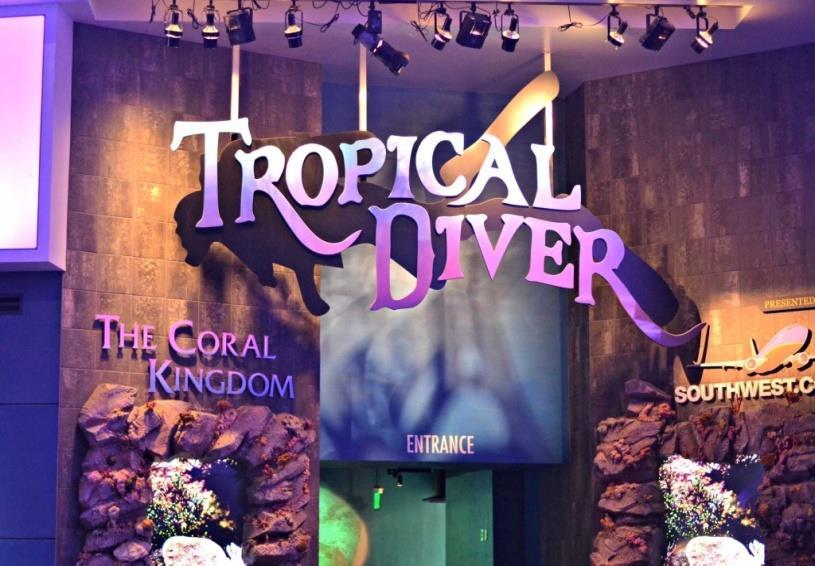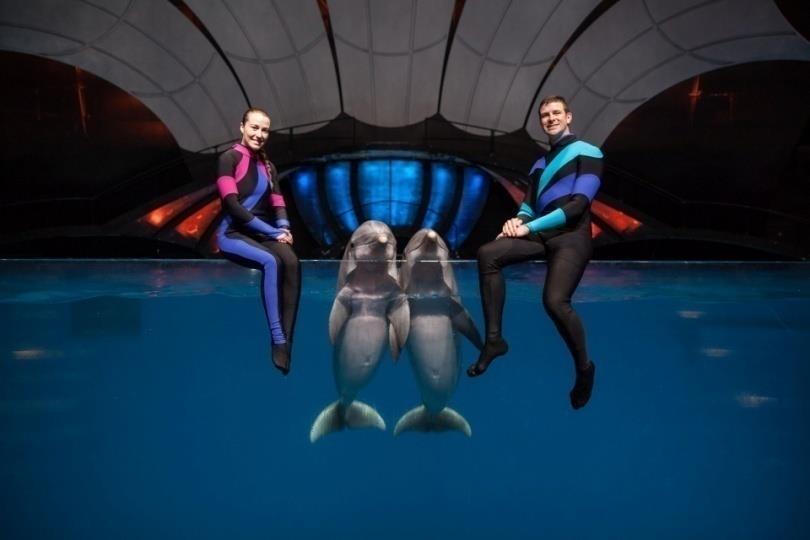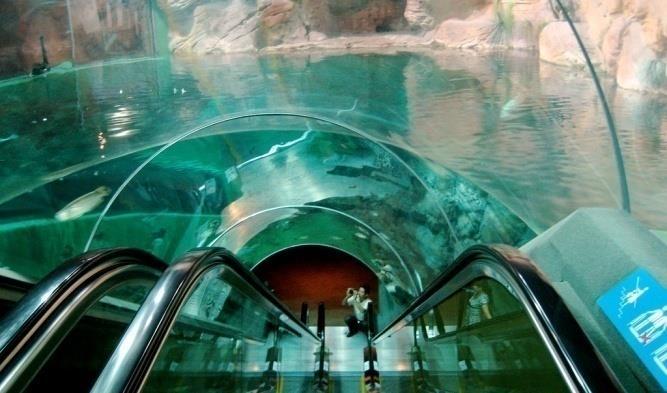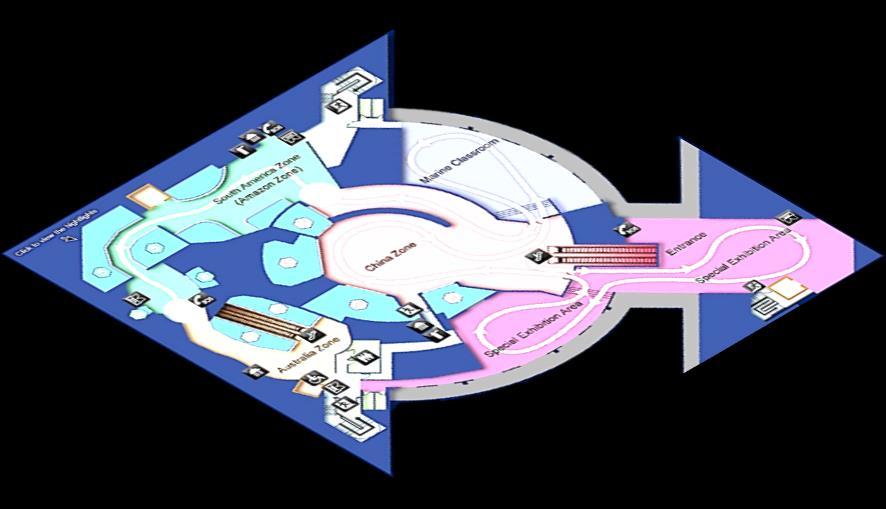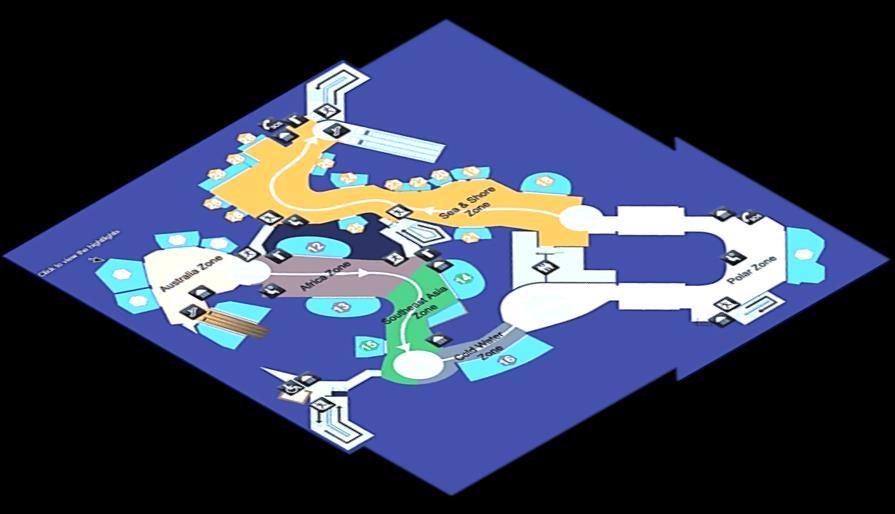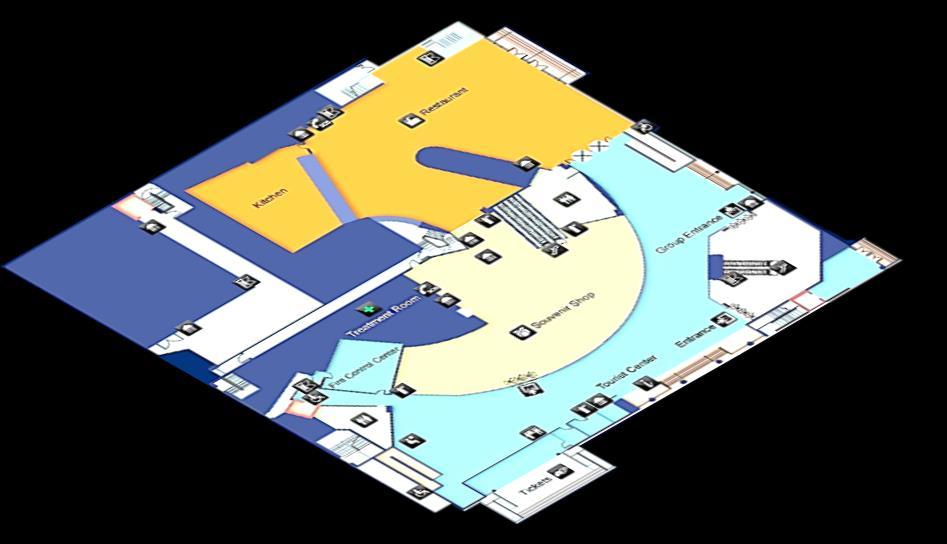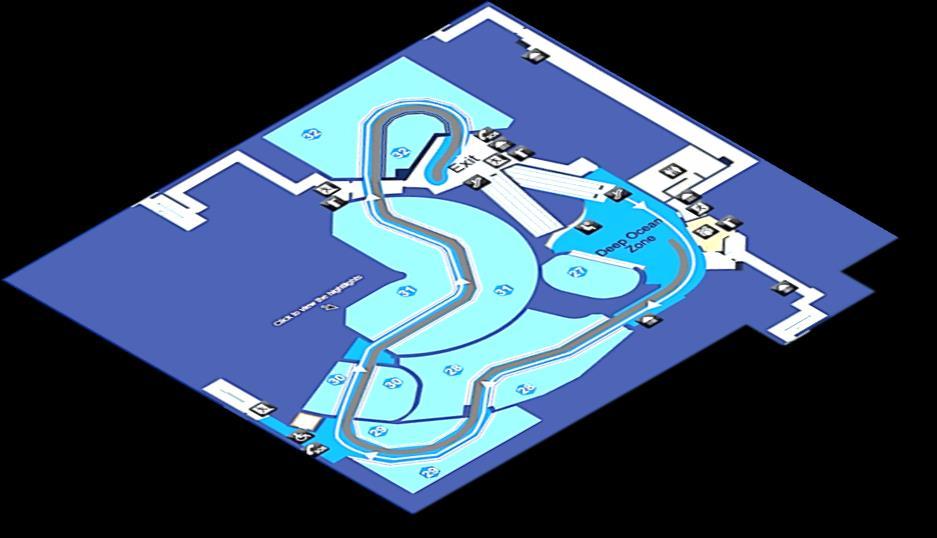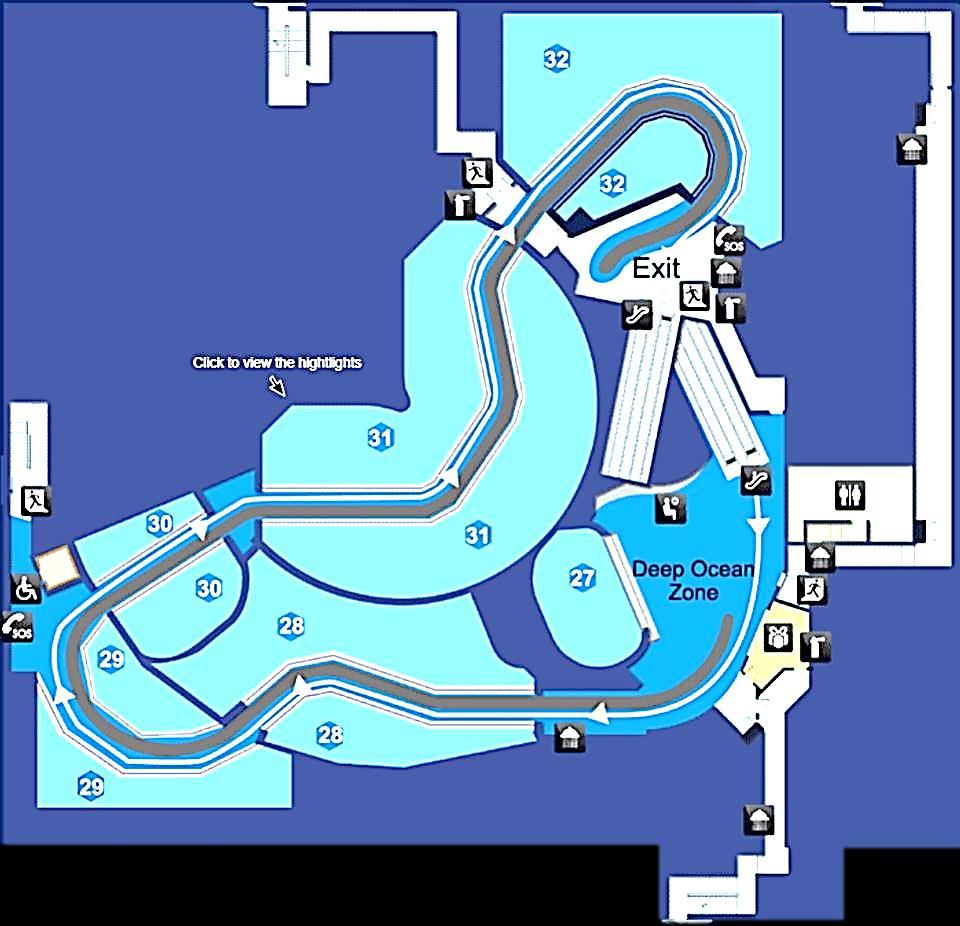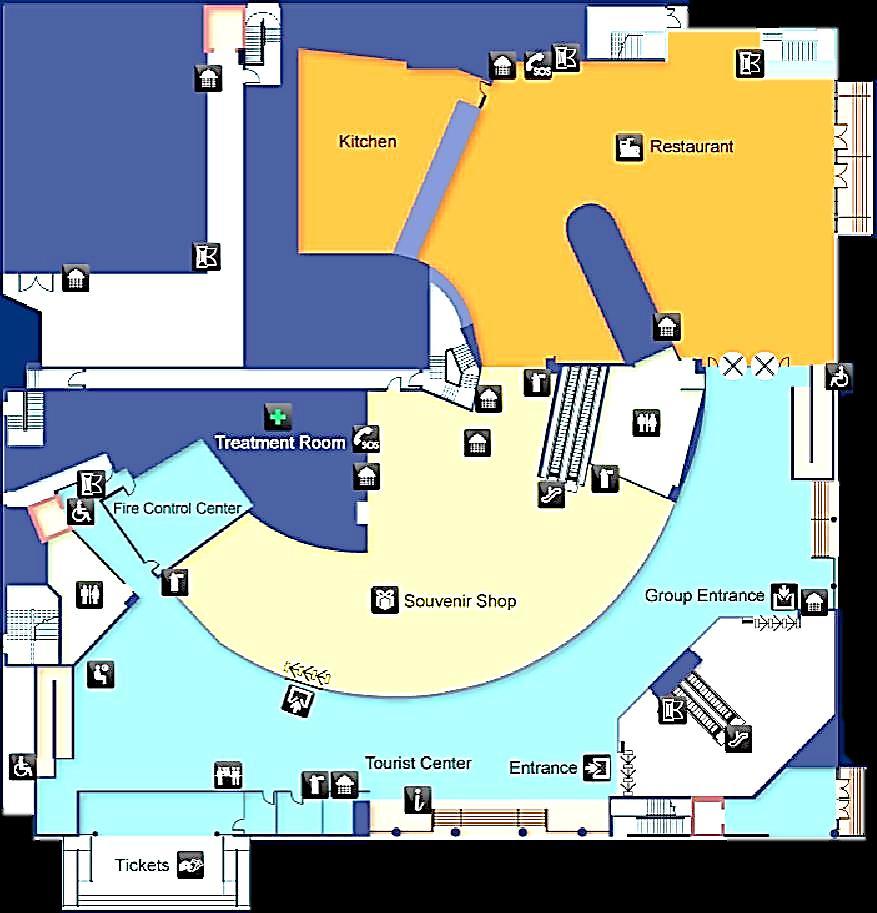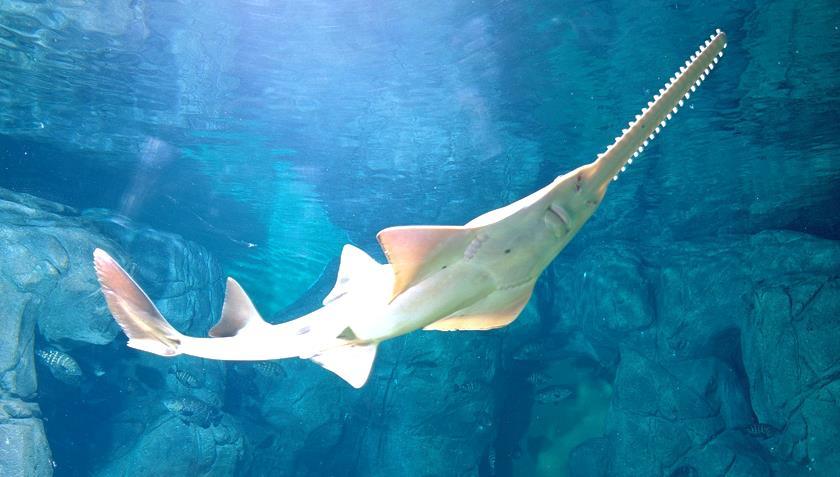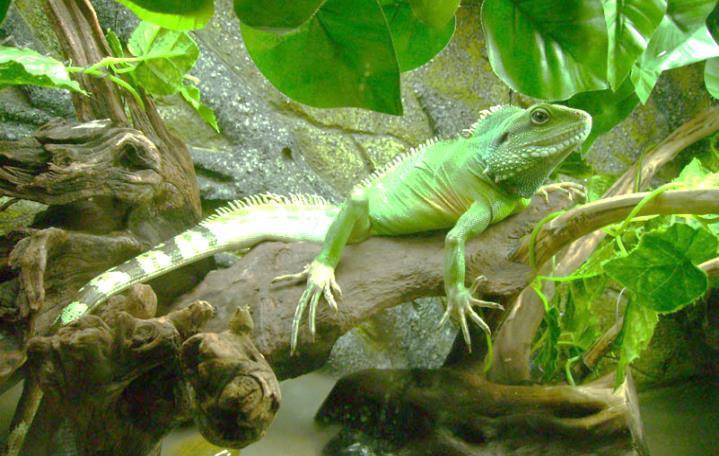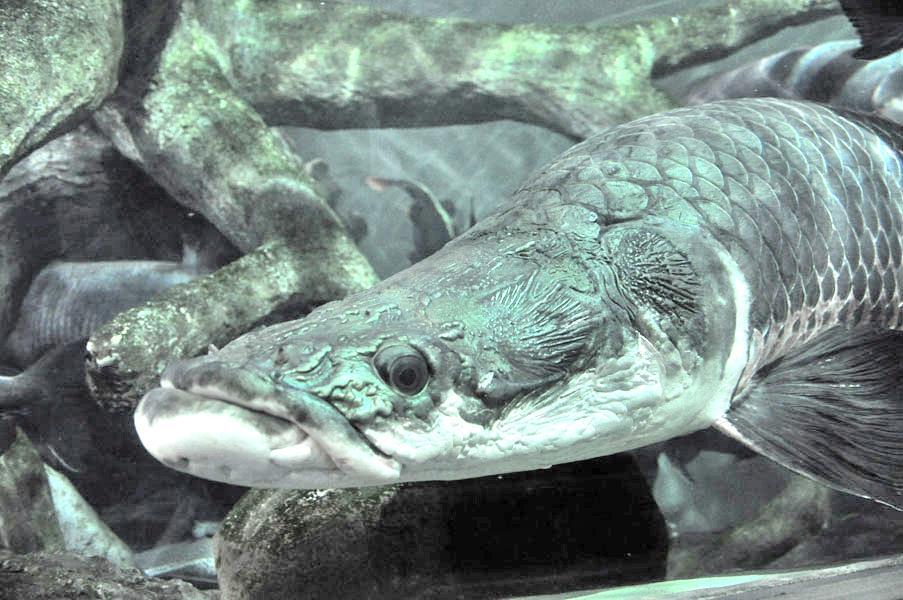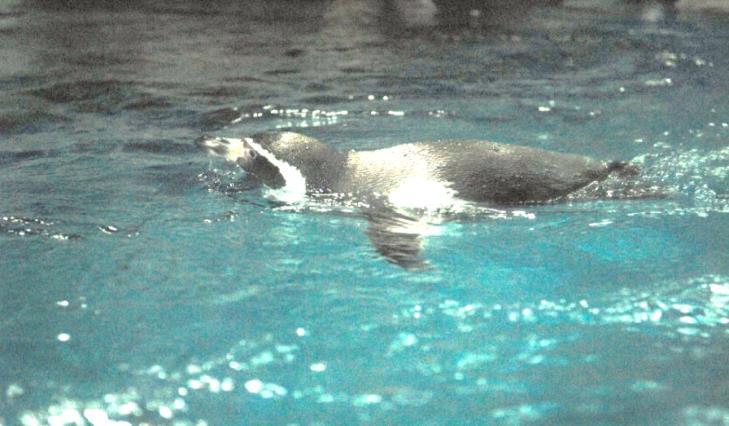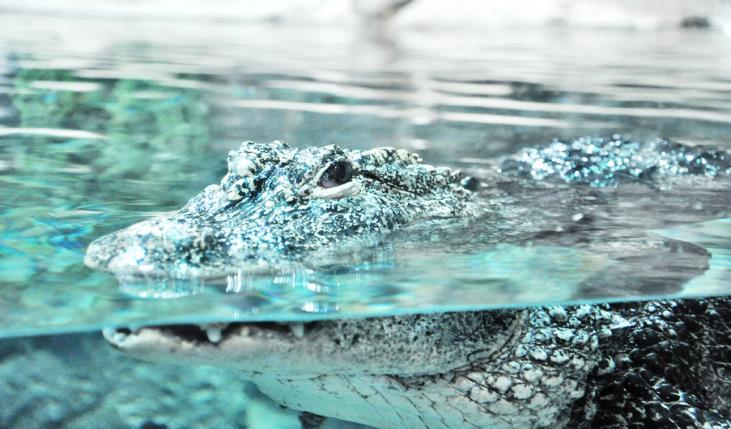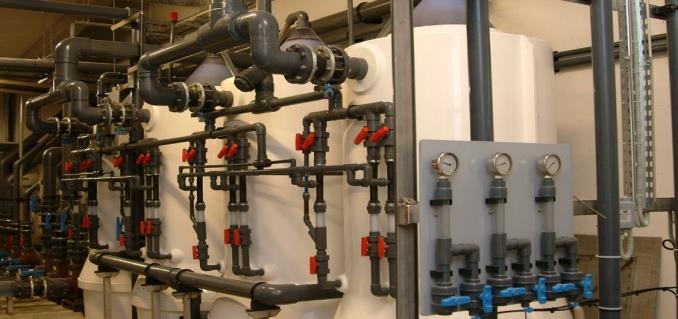3 LITERATURE STUDY
CLASSIFICATION OF FISHES:
Fish the member of the Animalia Kingdom is classified into Phylum Chordata and Vertebrata Subphylum. Fishes poses notochord, tubular nerve chord, paired gills, segmentation of the body parts, post and tail, ventral heart, and an endoskeleton to be the member of the Chordata. In order to be a vertebrate, it poses backbone. This back bone supports and protects the spinal cord.
All the species of the fish found in the world are classified into the following three groups.
Agnathan - jawless fish
Chrondrichthyes - cartilaginous fish
Osteichthyes - bony fish
About 50 species of Agnatha fish, 600 species of Chrondrichthyes fish and 30,000 species of Osteichthyes fish are found in the world. Most of the fishes in the bony group belong to the ray finned group. According to the biologist there are about 70 fish orders are found in the world.
Sharks and rays, sturgeon and gars, herring-like fishes, trout and salmon, eels, minnows, suckers, and catfish, flying fish and relatives, cod-like fish, flatfish, seahorses and relatives, mullets, silversides, and barracuda and mackerels and tunas are the main group of fishes.
3.1.1 Agnathan:
3.1.1.1 Subphylum Vertebrata:
Agnathan are jawless fish and lack paired fins. They also lack the internal skeleton system. They have a circular tooth mouth (cyclostomic) by which they bore the body of their victim and suck their blood. These are classified in to two major types. They are Hagfish and Lampreys
3.1.1.2 Characteristic of Agnatha
Jaws are absent.
Paired fins are absent
Bony scales and skin plates were present in the ancient species but are absent in the living species.
Gill pouches are present. They have seven or more pouches.
Stomach is absent in the digestive system.
3.1.2 Chrondrichthyes:
3.1.2.1 Subphylum Vertebrata:
Fearsome predators and harmless mollusc eaters are the members of the Chrondr ichthyes. The member of the cartilaginous fish poses true bone and also poses a skeleton made up of cartilage. Only the teeth of this species and rarely the vertebrae are calcified. Sharks, Skates, and Rays make up the group of chrondrichthyes.
3.1.3 Osteichthyes:
3.1.3.1 Subphylum Vertebrata:
About 30000 species of bony fish are found in this class. Fishes that belong to this species are spindle shaped, oval in section and flattened. Skins are protected by protective scales. Some fishes of this category have actual lungs to breathe and also have sharp eyesight. These bony fishes have a special gas filled chamber called airbladder housed under the skeleton to allow them to remain buoyant. Another adaptation is operculum, a bone on the sides of the fish to protect the chambers that house the gills.
Bony fish are again classified into ray finned and lobe finned fish. Ray finned fish nave thin, flexible skeleton rays. Lobe finned fish have muscular fins supported by bones. Bony fish fertilizes either internally or externally. Two types of eggs are laid by the bony fish. They are the eggs that float and the eggs that sink.
3.1.3.2 Characteristic Of Osteichthyes:
Have more or less bony skeleton and numerous vertebrae
Mucous glands and embedded dermal scales are present in the skin Have paired fins
aws are present
Gill arches support the gills and are protected by the operculum.
3.2 FISH ANATOMY & PHYSIOLOGY:
There are few creatures on earth that have developed such an interesting and unique set of physical characteristics as the fish. Their special adaptations have allowed them to survive in an environment completely different than humans. Water is 800 times denser than air. Water also contains less than 2% of the oxygen contained in the air. Sound and light are very distorted in the water. Yet despite these difficult obstacles in life, fish have some unique anatomical adaptations that allow them to flourish. If aquarium owners have an understanding of these basic adaptations, it will help them to better care for their fish.
3.2.1 The Skin:
Unlike most land dwelling animals, fish have evolved several unique traits in their outside coverings including scales, Fins and protective mucous. Most fish have 7 fins, although some have 6 and some 8. These fins allow fish to steer and move forward and backward. Because
water is 800 times denser than air, fish require a tremendous amount of muscle strength and coordination. The powerful tail fin coupled with a large efficient muscle-filled body gives the fish the necessary strength. On the outside of the skin most fish have compact rows of protective scales. These scales are firmly attached to the skin and are primarily made of hard calcium. The scales offer unsurpassed protection against injury and infection. Catfish have evolved without scales, but some have hard bony plates and others have sharp spines in some of their fins that help keep predators at bay. Over the tops of their scales, fish secrete a mucous covering. This mucous is very effective at trapping and immobilizing bacteria and viruses and even contains antibacterial-like agents that will help kill the trapped bacteria. Another important trait of the mucous is to reduce friction and allow the fish to move through the water more easilv
3.2.2 The Swimbladder:
The swimbladder is a unique organ found only in fish and is sometimes called the 'air bladder'. It is a smooth, gas-filled organ found in the abdomen of most fish. A fish will either add to or decrease the amount of air in the bladder to help it move up or down in the water. Without the air bladder, the fish would have to swim continuously to keep from sinking to the bottom. By adjusting the amount of air in the bladder, fish can adjust the depth at which they float and extend very little energy in the process. One other benefit of the air bladder in some species is that it can be used to receive or emit sounds.
3.2.3
Maintaining Salt Balance:
As in people, maintaining the proper level of salt in the fish's body is critical to proper health. Fish face an exceptionally difficult challenge because they live in a watery environment and tend to 'leak' a lot. The concentration of salt in a freshwater fish is much higher than in the surround ing water, so salt is constantly leaking out of the fish into the water. To compensate for this, fish have developed several solutions. The first and foremost is that they ingest a very large quantity of water and as a result produce a large quantity of urine (10-20 times as much as land mammals). Their kidneys extract the small amount of salt from the-1ngested water and put it back into the fish's bloodstream. The other thing they have is an ion pump in their gills that actually helps take salt out of the water and discharges ammonia and other undesirable products. Saltwater fish have the same problem in reverse. For salt water fish, the sea water contains a much higher concentration than what is in their bodies. As a result, salt leaks in and the fish has to use its kidneys and ion pumps to excrete extra salt.
3.2.4 Breathing Underwater:
Breathing underwater is one of the most interesting adaptations of fish. Fish need oxygen just like people, but the trick is getting the small amount of available oxygen out of the water and into the bloodstream. The way that fish accomplish this is through their gills. The gills contain thousands of tiny capillaries (blood vessels). Water is constantly pumped over the gills through a combination of opening and closing the mouth and muscular contractions that force water over the gills. The oxygen is absorbed out of the water and goes directly into the bloodstream.
Water temperature can greatly affect the concentration of free oxygen in the water. As the water temperature increases, the free oxygen concentration decreases. Stagnant or poor quality water also contains less oxygen. A fish that becomes stressed or overly excited in water that has low oxygen content can have severe respiratory difficulty and can die. Because the air contains much more oxygen than the water, some people question why fish cannot breathe out of the water. The reason is that the small delicate lamellae (thin branching structures) in the gills will collapse when the fish is out of the water. This will make it impossible for oxygen to be absorbed. To determine how long a fish can be kept out of the water, hold your breath when you take your fish out of the tank. When you need to breathe, then so does your fish
3.3 FRESHWATER AQUARIUM v/s SALTWATER AQUARIUM:
While we are generally breaking down the types of aquariums you can choose into two large categories - freshwater or saltwater - there are actually several subcategories within each of these larger options. These subcategories have a huge impact on aspects of your tank such as cost and maintenance .
For freshwater, some of the subcategories include:
Planted tanks
Biotope tanks
Cichlid tanks (African or New World)
Brackish tanks
Predator tanks
For saltwater, the three main subcategories are:
Fish-only tanks
Fish-only with live rock tanks (FOWLR)
Reef tanks
3.3.1 Cost:
When comparing freshwater and saltwater tanks, cost is what many people assume to be the main difference. There is a common perception that saltwater aquariums cost a good deal more than freshwater ones. To be quite honest, this is generally the case. Saltwater fish tend to be more expensive and these tanks tend to require additional equipment. If you choose to incorporate them, corals can also add significantly to the cost of your tank. All of these things need to be considered, but do realize that cost is relative.
For example, a reef tank is probably going to be the most expensive of the saltwater aquariums. Therefore, if you wanted to keep the cost more in-line with a freshwater tank, you could setup a fish-only or FOWLR tank. You could also do DIY projects for much of the additional equipment required for saltwater tanks. On the flip side of this, you can certainly make a freshwater aquarium very expensive. For example, if you have a heavily planted tank, the additional lighting, carbon dioxide, and fertilizers can add up fast. African cichlid tanks can require huge amounts of rock that can be equivalent to placing live rock in your tank in a saltwater setup
3.3.2
Size:
It used to be the common belief that you could not have a saltwater tank under 50 gallons. With the rise in popularity of nano tanks, however, this is clearly no longer the case. In fact many manufacturers are now making 10-30 gallon all-in-one units (example: Nano Cube HQI) specifically for saltwater use. It remains true, however, that larger tanks are easier to care for than smaller tanks due to increased water volume. This being the case, there is no significant difference between keeping a freshwater or a saltwater tank in regard to tank size.
3.3.3
Water Changes:
Saltwater tanks do require some additional work during water changes, mostly related to the fact that you have to mix the saltwater beforehand. This can be time consuming as the salt tends to dissolve slowly and requires you to buy a hydrometer to check the salinity level. There are ways to make this process easier, however. One option is to keep saltwater mixing continuously in a large bucket, heated with a heater and circulated with a powerhead. Using this method, you will always have fresh water available for water changes. Another option is to purchase pre-mixed saltwater from the pet store, but this option is much more expensive. With freshwater aquariums, of course, you do not need to mix saltwater. You do, however, need to treat the tap water with a water purifier to remove toxic chemicals that could endanger your fish.
3.3.4
Lighting:
Saltwater lighting can get very expensive. Many corals require metal halide lighting which is not only expensive to buy, but is also expensive to run. However, you can stay away from high-light corals and stick with power compact lighting which is a good deal cheaper than metal halide, but still more expensive than the "standard" fluorescent lighting found in many freshwater aquariums. You could also choose a fish-only aquarium where the only lighting requirement is what makes the fish look good. It should also be noted that saltwater corals generally require actinic lighting (not to mention the fact that this kind of lighting makes them really pop). Actinic lighting is not often used in freshwater setups as plants do not benefit from that portion of the spectrum and it can promote algae growth.
In the freshwater world, the planted tank is the only tank that really has a lighting requirement and even in these tanks, compact fluorescents are the lighting of choice. In all other
freshwater aquariums, you only need the lighting that makes the tank and its inhabitants suit your tastes. No matter what tank you choose, the size and quality of the lighting system you utilize is your choice so, ultimately, you have control over how much you spend.
3.3.5 Colour:
There is simply no substitute for a reef aquarium in terms of color. It is just a fact that there is more variety and a wider array of brightly colored fish and corals in the saltwater world. The only thing that comes close, in my opinion, is an African cichlid tank (people who do not know much about fish often mistake my cichlid tank for a saltwater tank), but even these do not have the intense color differences found in a full reef tank. There are some very colorful freshwater fish, of course, but the spectrum of color seen in freshwater fish is very different from that seen in saltwater species.
3.3.6 Variety:
Again, the edge probably has to go to saltwater here. While there are certainly enough fresh water species to ensure you never get bored, it just doesn't compare to the huge array of very different looking fish and invertebrates found in saltwater setups. Being able to add corals and other odd creatures also adds to the variety found in saltwater setups. With fresh water aquariums, however, you still have plenty of options in species of fish that live at all levels of the tank - you also have your choice of invertebrates like snails and even dwarf frogs.
3.3.7 Equipment:
Again, you can do a saltwater setup without a great deal of additional equipment, but the average saltwater aquarium does usually use more equipment than a freshwater setup. Examples of equipment many people use in the saltwater world that are not required in freshwater include:
Protein skimmer.
Hydrometer.
Salt mix
Live rock.
Power heads (these can be found in many freshwater setups as well, but they are generally not required there).
Additional test kits (examples: alkalinity, calcium).
Sump.
3.3.8 Aquarium Dynamic:
With saltwater aquariums, your tank is always evolving, When you put live rock or live sand in your tank, hitch hikers come along and you just have no idea what to expect next. Very rarely in the freshwater world (outside of snails coming with plants) do you see inhabitants in your tank that were not purchased intentionally. It is really interesting to sit and watch your saltwater tank te see what is new. Now, along with this comes a negative because not all of
these hitch hikers are good (examples: Aiptasia , bristle worms, mantis shrimps, etc.). It can be hard to remove some of these bad hitch hikers which can lead to added stress.
One benefit that freshwater tanks have over saltwater aquariums, however, is the fact that freshwater fish are usually easier to breed. Cichlids, livebearers and other species breed prolifically in the home tank with little to no encouragement from the aquarist. Not only do you get to experience the joy of having new fish in your tank, but you also get to watch courting and mating behaviors. Saltwater fish can be very difficult to breed so you may not have as many chances to have these experiences if you don't go with a freshwater tank.
3.3.9 Ease Of Keeping:
Similar to the fact that most (but not all) saltwater tanks are more expensive than fresh water, freshwater tanks are generally easier to care for. This is especially true when comparing a freshwater tank to a reef setup. Again, there are counter examples (comparing a heavily planted tank to a fish-only saltwater) , but generally the variables are less complex in a freshwater setup.
3.3.10 Coral:
Obviously there is nothing in the freshwater world like coral. If you just love coral then salt water is the way to go. My mother-in-law has a saltwater setup with two small clownfish and tons of coral species. She doesn't really care for fish all that much, but she loves watching the different kinds of coral in her tank. Keep in mind though that with coral comes additional maintenance. Each one of your coral species may require a different diet, light level, or current preference. You must be willing to put in the time to properly care for these creatures
3.4 FRESHWATER AQUARIUM SETUP:
3.4.1 Essentials & Accessories:
All freshwater aquariums require similar basics - a good tank, a solid stand, quality accessories and maintenance tools. But to determine which kind of what items you need, first consider the aquatic life you want to keep'. Freshwater fish come in all shapes and sizes with wide ranging requirements for their living conditions. Betta fish prefer smaller tanks with almost no current while Oscar cichlids need lots of room to grow and can swim in water with low currents. Understanding the needs of the fish you want will make choosing your tank essentials and accessories that much easier.
3.4.2 Aquarium Furniture - Tanks & Stands:
The size of your tank depends on a tot of different factors : how much space do you have, how much weight can you manage (a gallon of water weighs nearly 9 lbs.) and most importantly what kind of aquatic life you want to keep. If your only limiting factor is fish type, remember that most freshwater fish require at least one gallon for every adult inch they are long; some species like gold fish require more.
Furniture Type
Desktop tanks
Standard aquariums
Kits
Stands
Cabinets
Canopy/Cabinet Combo
TABLE 1
Description
Compact design and footprint.
Ideal for a limited number of small fish.
May include built-in filter and/or light.
May include built-in filter and/or light.
Larger tanks requires strong stands for support.
Glass or acrylic.
Includes tank and at least one of the following : filter, hood, lamp, start-up conditioner, food.
Filtration and lighting may be built into the system.
Great for first-time aquarists.
Made with wood , metal or both.
Reinforced designs to hold up heavy tanks.
May include supply shelves.
Stands designed with closed cabinet and shelves for storage.
Discreetly hides food and maintenance equipment.
Available in a variety of sizes to suit different aquariums.
Two-piece set for large aquariums
Cabinet holds supplies or equipment
Canopies frame tank and allow access to waterline
3.4.3 Hoods & Lighting
Lights brighten your tank so you can enjoy your fish throughout the day. If you want a planted tank, you may prefer certain types of lights over others. Some kits include hoods and lamps, but you can always customize your own setup with different light fixtures and bulbs.
TABLE 2
Hood & Lighting Type
Hood
Fluorescent bulb
Description
Covers tank to prevent fish escapes and evaporation
Often designed to house lights or bulbs
Adjustable designs available
Most popular aquarium lighting choice
Halide bulb
Stands
LED lamp
Incandescent bulb
Great for most freshwater aquariums
Come in a wide variety of spectrums
Some versions ideal for planted aquariums
Ideal for planted aquariums
May produce excess heat
Requires special fixtures for proper use
Made with wood, metal or both
Reinforced designs to hold up heavy tanks
May include supply shelves
Typically longest lifespan of aquarium lighting systems
More energy efficient
May allow for light color customization
Inexpensive lighting option
Easily found and replaceable
Uses more electricity and produces more heat compared to other bulb types
3.4.4 Filters & Media
Filters are key to keeping your tank clean and healthy. Determining the size of your tank and the needs of your fish will help you decide what filter system to get. More powerful filters are great for larger tanks ,while smaller tanks or more delicate fish may require a less powerful filter.
FILTER TYPE
Canister filter
Power filters
Filter media
TABLE 3
DESCRIPTION
External filter system with a variety of mounting and installation options
Powerful pump for large aquariums
Three-stage filtration media can be replaced separately
Standard over-the-edge tank filters
Available in a variety of sizes
Replace filter media as needed
Mechanical filters strain debris, waste, uneaten food, etc.
Biological filters foster healthy bacteria that break down ammonia and nitrites
Chemical filters remove toxins that cause odor and water discoloration
3.4.5 Climate Control
Freshwater fish have all different tolerances for water temperature. Some like it tropically warm, and some like it cool. And it's not just a matter of preference ,their environment impacts their health and behavior. Learn about the type of fish you want to keep and what their ideal water temperature is. A thermometer and the right equipment can help you keep your fish happy and healthy.
TABLE 3
EQUIPMENT
Thermometer
Heater
Chiller
DESCRIPTION
Helps you monitor water temperature
In-tank or external options available
Digital options available
Helps regulate tank temperature
External and submersible heating options available
Ideal for tropical tanks or cool climates
Adjustable thermostats offer precise temperature control
Ideal for coldwater tanks or warm climates
Typically used for larger tanks
Expensive piece of equipment
3.4.6 Maintenance & Accessories:
EQUIPMENT
Air pump systems
Gravel vacuum
Algae pads
Net
Test kits
TABLE 5
DESCRIPTION
Oxygenates and circulates water
Create a stream or curtain of bubbles
Connect powered pumps to air stone with airline tubing and check valve to prevent backflow.
Cleans waste and detritus from substrate
Change water while you clean
Variety of sizes available to suit your tank
Cleans algae and other deposits on tank walls
Specially made to not damage tanks
Pads available for both glass and acrylic tanks
Makes moving aquatic life easy
Designed to safely catch aquatic life
Various sizes available to suit your aquatic life and tank
Measures pH, ammonia, nitrate and more
Provides a snapshot of the health of your aquarium
Scientifically accurate and easy to use
3.4.7 Water Additives:
Water right out of the tap isn't ready fo go into your tank. Conditioners, dechlorinators, beneficial bacteria and more help to transform your water into a fish-safe environment
TABLE 5
Additive
Algae removers
Beneficial bacteria
Chlorine & heavy metal removers
Ammonia & chloramine removers
Live plant additives
pH conditioners
Clarifters
Description
Helps to control algae blooms
Keeps water clean and clear
Provides tanks with healthy live bacteria
Supports natural processes like waste breakdown and 1ank cycling
Neutralizes harmful chlorine from tap water
Use when starting tank or preparing for water changes
Neutralizes harmful ammonia and chloramine from tank water
Condition water for new tanks or water changes
Promotes growth in planted aquariums
May include fertilizers and nutrie·nts
Increases or decreases tank water pH
Ideal for fish that prefer slightly acidic or alkaline water
Eliminates causes of cloudy water
Conditions tank water
3.4.8 DECOR
When all the essentials are in pface, it's time to add the bells and whistles. Decorate your tank with ornaments, silk plants, backgrounds and substrate of all colors to create a completely unique look for your aquarium inhabitants.
TABLE 7
Decor types
Resin, rock & driftwood ornaments
Artificial Plants
Description
Wide variety of shapes, sizes, colors and designs
Can provide hideaways or cover for fish
Provides interest and enrichment for fish
Plastic and silk fish-safe plants
Creates a more natural look without the maintenance requirements of live plants
Backgrounds
Gravel & Substrate
Wide variety of sizes, shapes and colors
Adheres to the back wall of tank
Choose from natural or fun scenes
Gives the impression of depth and texture
Variety of textures, shapes and colors
Provides a surface for beneficial bacteria to colonize
Sand, gravel and artificial substrates available
3.5 FACTORS AFFECTING THE DESIGN:
An oceanarium involves more complex site design than that of an aquarium. It is a complex that generated a stimulating environment where people can observe marine life in its natural habitat with the complete underwater landscape .
3.5.1
PLA NNING
A well designed oceanarium must incorporate smooth facilitation of process and smooth circulation of people since there are chances of it being crowded so that spaces must be well designed and spacious. There are mainly 2 types of area:
Public Area - Area with the most circulation consisting of all the exhibits and the recreational area
Services Area -All the area required for maintaining the display area for the proper functioning of oceanarium . This area should be usually kept out of sight of the visitors.
3.5.2
CRICULATION
Main principle includes convenience, safety and aesthetics. Convenience suggests speed when desired. Easy smooth working of various operations medical checking guaranteeing to be provided from acoustical and visual nuisance.
A well designed Oceanarium must provide enough space for smooth circulation of various process involved in running, adequate things, efficient ventilation and satisfactory sound insulation. Scientifically perceived scheme of setting up the tank in harmony with the surroundings to please the visitor's eye.
Attention should be given for various necessary operations - such as incoming specimens their medical checking and quarantining if necessary.
Other important function includes imparting knowledge of the specimen displayed through informative themes by grouping the specimens of same type.
It is important that the exit is convenient to public and should not open into an area which would lead to their confusion and should not open near the services area. It should open into an open area in case of any emergency.
3.6 AQUATIC NEED:
3.6.1 Common Information About Fishes:
Ph value of the water should be checked regularly (ph at 7.2 to 8.5)
Temperature should not be more than 280 c.
Pool should be designed in a way that rapid filling and emptying can take place. Water of the pool should be kept separate from the waste water of the soil and roof run offs.
Salinity checks should take place at timely intervals and should be between 18 to 36 gms
Bacterial content of the pool should be monitored and should be kept low as much as possible it should not exceed 50 per 1000ml.
Total filtration turnover time should not exceed 4 hours.
3.6.2 FEEDIGN INFORMATION
Food chart should be maintained, where diet of each fish is noted down.
Every species of fish have different diet and food should be given accordingly ,they should be fed at least once in 3 days.
Food given to small fishes living in large groups should be measured in grams and an account of the amount of food given should be kept.
Food should be of wholesome and of standard quality it should have the nutritionalvalue to keep the fish healthy.
Food should be prepared with care that no bacterial contamination takes place food kept in freezer should be kept at 280 c and should be used at the appropriate time, care should be taken that the food does not expire.
3.6.3
HYGIENE CARE
All the wall's and the floors should be cleaned on daily basis, no food particles should re- main at the bottom of the tanks.
Water should be clean for the fishes.
Kitchen area should be washed daily and all the utensils should be cleaned on daily.
3.6.4
HEALTH CHECKUPS
Programs to measure illness prevention and control must be set up regularly.
Fishes should be observed, the way they swim or the change of skin color or diet may suggest illness.
Newly arrived dolphins should be kept apart from others until good health is assured.
Isolation pools must be set up for ill or sick fishes.
A health record for fishes should be kept with all the required data.
An autopsy should be carried out by a vet when an animal dies.
3.6.5 Temperature:
For economic reasons, it is desirable to maintain an even temperature throughout the Oceanarium and is best for the health of fish.
Most fishes need temperature of 74-78 degree Fahrenheit depending on the season. Temperature of 72f (260c - 280c) is compatible for visitors and will permit automatic maintenance of display tanks at same temperature.
Avoid mercury thermometer cause it might break and poison the tank.
During winters heaters and during summers coolers shall be used.
Water circulation must be sufficient to diffuse heat evenly. This circulation must be maintained either by aeration or by an adequate number of fishes active enough to ensure this.
3.6.6 Lighting:
Lighting is very important for an aquarium and is always neglected having the appropriate
Light stimulates natural daylight in the tank.
Florescent lights the best light in the tank they don't let the fish go awol ,they are also very easy to install n make feeding n cleaning of the tank very easy. Avoid incandescent lights as they give of too much heat which could stress the fish as well as evaporates more water from the tank.
3.7 WATER SUPPLY SYSTEM:
There are 3 types of water supply system
Open water system
Semi-closed water system
Closed water system
3.7.1 Open Water System
In open systems the water flows through the aquarium once and is discarded. This provides water quality comparable to that of the natural environment and there is no buildup of toxic metabolic wastes ,however, temperature control and pumping are usually costly and filtration often is necessary. Hence an open system is not preferred.
Tank
3.7.2 Semi-Closed Water System:
Semis closed are the same as closed systems except that there is a constant connection
Filteration
to the water supply and the problem of dissolved wastes is controlled by the regular addition of new water, this system is more economical than the open type in terms of temperature control and pumping.
3.7.3 Closed Water System:
Water is continuously re-circulated in closed systems and is only renewed periodically. Metabolic wastes must be treated since they are not continuously flushed from the system. An import ant problem is that ammonia must be rapidly removed or transformed because it is harmful even at very low concentrations. In the aquarium the bacteria that converts ammonia to nitrite reside primarily in the filter material and a slow sand filter with a large surface area is usually provided to ensure their abundance.
Plant growth in the aquarium, especially in marine systems are not usually sufficient to utilize the en tire nitrate produced by bacteria from nitrite. Although some aquariums have operated many years with a minimum of water renewal it is normally necessary to replace from 1 to 10 % of the water per month to maintain a low level of nitrates.
The use of charcoal in both fresh water and seawater system helps to slow down the accumulation of nitrogenous wastes. Metabolic wastes also cause an increase in the acidity of water. Carbonate compounds are commonly used to maintain an optimal level of acidity, particularly.
3.8 FILTERATION AND LIFE SUPPORT SYSTEMS:
In nature tidal fluctuations, current, incorporation by plant and algae life and many other processes help in the removal of animal wastes. A sustainable life support technology must rely upon the principles of water mechanical.
3.8.1 Biological Filtration:
It is the conversion of the nitrogenous wastes such as ammonia (NH3) or nitrate (N02) into less harmful nitrates or nitrogen gas. This is accomplished through the action of the bacteria living on suitable substrate such as gravel bed or plastic structures called bio-media.
3.8.2 Mechanical Filtration:
It is the removal of the dissolved suspended particles from the water by some type of filter or medium such as sand or floss, a rapid sand.
Filter is an example of mechanical filtration as it uses a layer of sand and fine coal to stop particles.
3.8.3 Chemical Filtration:
It is the removal of the dissolved organic compounds. Dissolved organic materials can cause the water to have a yellowish appearance. This is remedied by using ab activated carbon filter, a foam fractional or ozone. Many harmful compounds and medications can be removed through chemical filtration.
When it comes to creating a healthy environment for marine fish, mammals & inverte brates biological filtration is by far the most critical consideration. While chemical and mechanical filtration plays important roles they are primarily supplemental to and support-ive of the biological process.
The best designs should not only result in the crystal clear water that every visitors and curator wants to see, but also the stable and sustainable water quality that closely parallels a natural aquatic environment. Indicators of a stable environment can be identified, by but are not limited to common water quality criteria, including water temperature. Indicators of a stable envirorunent can be identified by, but are not limited to, common water quality criteria, including water temperatures dissolved oxygen, pH and dissolved organic carbon (DOC). While these are common water quality indicators, the life support engineer knows how the design approach will change when creating a system that must sustain animals as diverse as a delicate moon jellyfish and a 1,500 pound manatee.
3.9 MATERIAL FOR CONSTRUCTION OF TANK :
Acrylic is half the weight of glass. It is easier to ship, move and set up.
Acrylic is stronger than glass and will not shatter or leak like glass.
Acrylic distorts much less and is clearer than glass.
If the temperature objects is surrounded by another mater ial that has the same index of refraction will take place, and the object will appear invisible and without distortion even at increased viewing angles.
Reflections also don't take place inside an acrylic. Glass in other hand has a slight tint and the refractive index of glass is different than water so distortion happens where in acrylic has the same refractive index as water so the view is much clearer.
The huge clear acrylic used as the viewing window is about 12 inches thick.
Acrylic are also very good because they provide light to penetrate inside which is good for the coral reef system .
Acrylic is also used cause it does not allow water temperature fluctuation.
Acrylic is also used because it has a better molecular bond than glass. Any custom made shape can be made out of acrylic sheet.
3.10 TANK DIMENSIONS:
3.10.1 Tank Length :
This is the most important factor in a tank, since it is the dimension which will keep fish as far apart as possible and give them enough space to swim around in the tank especially for cruise predators .The tank should have a minimum of 5x adult fish body length (FL) as its long dimension with 20 cm of fish length being the bare minimum. A further 20-50% extra length should be added if the fish is a cruise predator (30%) or of it is extremely aggressive (+20%), Factors of 1.3, 1.2 and 1.5 respectively. If a fish is a poor swimmer then we can get along with just 5x without any additional length despite the aggression factor.
Proper information must be acquired of the species which are going to be exhibited in the tank. An extra 10-20% in the L value (Factor 1.1- 1.2) should be added if more than one specimen of the same species has to be kept in the tank. One should also consider that unlike mammals for instance fishes have indeterminate growth. The fishes growth slows down eventually but it will continue to grow as long as it lives. Therefore a confirmed maximum size may be routinely exceeded in captivity, and this too shall be allowed for in sizing the tank. On the other hand for a really mild mannered fish kept in a peaceful community tank one can reduce the 5x factor to 4x but it should be ensured that the fish
Doesn’t become aggressive. One cannot house a predator with its natural prey in the same tank will not save the later no matter what the tank volume is.
Thus for a single specimen, where
L Tank Length
FL Expected maximum fish length
Peaceful fish, peaceful tankmates : L = FL x 4
Aggressive fish, good swimmers : L = FL x 5 x 1.2
Aggressive fish, poor swimmers : L = FL x 5
Aggressive fish, cruise predators : L = FL x 5 x 1.5
Mild temperament, cruise predators : L = FL x 5 x 1.3
Pair of aggressive fish, cruise predators : L = FL x 5 x I .5 x l.2t
3.10.2 Tank Width:
The tank should have a minimum of l .2x adult fish body length as the width. With fish which have a body width over 5 cm, the factor should be l.3x adult fish length while for fish body over l0cm the factor should be l.4x.For any additional 10 cm in body, the factor should be increased by 0.1.Thus a red tail catfish with a body width of 30+ cms should have a factor of l .6x (Since the adult fish has a length of 120cm,this becomes a 192 cm width).The resulting values take the volume occupied by common aquascaping into account.
Thus for a single speciment, where
W Tank width
FL Expected maximu m fish length
Fish body width < 5cm : W = FL x 1.2
5cm < Fish body width < 10 cm : W = FL x 1.3
10cm < Fish body width < 20cm : W = FL x 1.4
Fish body width - 40 cm : W = FL x 1.7
3.10.3 Tank Height:
For height it is recommended a bare minimum of 20 cms and then to add up 2.5x Fish body height (FH) for a fish body height of less than 5cm and 3.5x for fishes with a body height over 5cms.For a fish that stays at the bottom a factor of 2x Body height should be used.
Thus for a single specimen, where
H Tank Height
FH Expected maximum fish height
Fish body height < 5cm : H= 20cms + (FH x 2.5)
Fish body height > 5cm : H= 20cms + (FH x 3.5)
Fish body height < 5cm : H= 20cms + (FH x 2)
eg. Catfish or Freshwater Ray
Fish body height > 5cm : H= 20cms + (FH x 2)
eg. Stingrays
Thus for fish over 20-25 cms in adult body length the tank size should be calculated by the formula L x W x H as previously described.
L = 70 x 5 x 1.5 = 525 cms
W = 98 cms
H = 90 cms
Result = 4,630 litres
Pair = 5,093 litres
But a tank for same species which is usually aggressive but not a good swimmer then formula gives:
L = 50 x 5 = 250 cms
W = 60 cms
H = 60 cms
Result = 900 litres
For a pair additional 10% should be added which gives a result of 990 litres.
If more than one species are to be kept together then calculations should be made seperately for each species and then choose the largest volume as the correct one, provided that the species are compatible. What we get is ofcourse the right tank for the species demanding the most volume. Then add 5-10% water volume for each additional individual.
The need of a manual override of the above formulas in the case of a species with a specific, odd or unique requirement when kept in captivity. A good example of this is the elephant nose fish. This species will reach a final length of 35cms and should be housed in a tank with a length of approximately 80 cm. This kind of tank usually has a capacity of 75-80 litres of water. However this species is a schooling fish and is found in fairly large schools of nature. Keeping less than 6 individuals in a tank will be most probably result in increased intra specific aggression and territorial behavior. Keeping six or more of them will spread this behavior equally among them and therefore there will be fewer fights in the tank. Keeping six of those fishes in 80 litres tank is not an option. The fish is carnivorous and six of them will present an enormous bio load that will challenge any filteration sysytem
Therefore some crucial factors for estimating the tank size that will keep some species thriving in captivity for many years. This will help scientist study their behavior and the patterns they follow furthermore.
4 CASE STUDY
4.1 GEORGIA AQUARIUM
Figure 11:Approach to site
Project : Georgia Aquarium
Location: Atlanta, Georgia , U.S.
Architect : PVAG
Architects
Area : 36421 sq.mt
Floor : 2
Built year: 21.08.200323.11.2005
Total species : 700
Figure 12:Outside View Of
4.1.1 Site Layout:
The site plan of Georgia Aquarium consist of a single building in a 9 acres of land surrounded by a mix landscape over its one side and having a multilevel parking provided at the back of the building.
4.1.2 About:
The Georgia Aquarium houses 120,000 animals, representing 700 species,in 8.5 million US gallons (32,000 m3) of marine and fresh water. It was the worlds largest oceanarium when it opened in 2005
Building Facade
Figure 13:Tropical Fish
Figure 14:Touch Pool
Figure 15:Georgia Aquarium Floor Plan
Its features a number of touch pool tanks with ray and shark as well as exhibits featuring sea turtles and the wildlife of gray's reef-a national marine sanctuary off the Georgia coast.
There are six different galleries exhibited. The six galleries are:
1. Georgia Explore
2. Tropical Driver
3. Ocean Voyager
4. Coldwater Quest
5. River Scout
6. Dolphin Tales
4.1.2.1 Georgia Explorer:
• Visiting the California sea lions in “Georgia Explorer”, a new exhibit that highlights this charismatic species.
• Trainers will interact with this notably social species of pinniped while educating guests on the dangers the face in the wild
4.1.2.2 Tropical Divers:
Escape to the tropics and engage your guests in the relaxing and intimate menu as they are mesmerized by one of the largest living reef exhibits in the world.
The living corals and thousands of tropical reef fish in this gallery represents a coral reef ecosystem in the tropical Pacific, complete with an overhead crashing wave.
Figure 16:Georgia Explorer
Figure 17:Tropical diver
4.1.2.3 Ocean Voyager:
While walking through an acrylic tunnel or standing in front of a gigantic acrylic viewing window, and visitor will fell like a scuba diver in an endless blue sea, mesmerized by thousands of fish swimming overhead.
Ocean Voyager is home to the gentle giants of the sea, including whale sharks and manta rays
4.1.2.4 Cold Quest:
Transport the visitors to the Arctic as they experience a reception or seated dinner among the chilly unknown.
The coldest ocean teem with wildlife like the weedy seadragon, beluga whale, giant pacific octopus and Japanese spider crab.
4.1.2.5 River Scout:
• Rivers are a source of life for animals and people throughout the world.
• In the River Scout gallery, visitor will discover the wide diversity of animals found in the rivers and lakes of Africa, South America, Asia and the state of Georgia.
Figure 18:Ocean Voyager
Figure 19:Cold Quest
Figure 20: River Scout
4.1.2.6 Dolphin Tales:
• Dolphin Tales is a high energy, fun and exciting experience.
• In this live presentation, the dolphins at Georgia Aquarium showcase some impressive behaviors and demonstrate their relationships with their trainers while incorporating an educational message about bottlenose dolphins.
4.1.3 Services:
• The water pipes of 24"at 3m c/c on periphery and 62"at the bottom are installed.
• The lighting is been done at the bottom and at the top by using lamps.
• The maintained is been check by a bay been running over the I - section installed to the roof structure.
4.1.4 Advance Technologies:
• The construction of the Aquarium presented many challenges to radio signal coverage.
• Basically, the Aquarium is a hollow structure, constructed of steel reinforced concrete walls up to four feet thick, surrounding an expansive main atrium with a 50 foot high ceiling.
• The animal habitats, clustered around the main atrium, require more than eight million
4.1.5 Feature:
• Its feature living corals and thousands of colorful reef fish in a recreating tropical pacific coral reef, completed with overhead crashing wave.
• It features an overhead river where visitors can see north American fishes from the bottom up in addition to local specimens this exhibits displays
• pirahna, electric fish and other unusual freshwater life.
4.1.6 Number of staff :
• More than 500 full-time and part-time employees and 2,000 volunteer staff members keep the Aquarium operating on a seven-day a week schedule that also
Figure 21:Dolphin Tales
includes unique guest overnight stay events and a kids' conservation education program. Operations, security, education, maintenance, veterinary and staff training, administration personnel.
4.1.7 Fun Facts about the Georgia Aquarium:
• The Aquarium's filtration system contains more than 70 miles of pipe, enough to more than encircle the city of Atlanta on the 1-285 loop.
• The heating and air conditioning system has 4300 tons of cooling capacity, enough to cool over 1400 average-sized homes. Plumbing systems include 290 plumbing fixtures, 200 floor drains and 53 roof drains.
• The Georgia Aquarium's habitats hold the equivalent water volume to more than 100 million cans of Coke.
• The drains are connected by 1.5 miles of underground pipe and 5.5 miles of aboveground pipe.
• Approximately 230 newly constructed average-sized American homes can fit inside the Georgia Aquarium.
• In the Aquarium's life support systems, there are 506 pumps using over 5,500 horsepower to move more than 300,000 gallons of water every minute. The water is moved through 187 sand filters, 91 protein skimmers and 76 towers.
4.1.8 Inferences:
Planning
Circulation
4.1.9 Positive aspect
4.1.10 Negative aspect
- The high emphasized entrance make the first fell very interesting
- The proper area distribution to different areas make the conditions less choric for the users. The panoramic view all the zones from a single point keep the interest unbeaten.
The presence of all the galleries and other stuff on the same level make the circulation a bit non confusing as a cyclonical point of view.
- No use of direct sunlight at any of the part for visitors.
- The galleries because of not been interconnected some makes feel tiredness for visitors
The multidirectional movement of the public from the same atrium can make the conditions unsuitable.
Services
Aesthetics
- use of closed filtration system helps the reduction in cost of the water treatment illumination done using different lights with the tank base helps to observe the marine life more prominently
- The structure is the combination of different forms that give complete justice to the functional aspects.
- The use of light at the external facade makes its more interesting to watch at night
The form again does not do justice with the water as a theme until and unless one goes inside.
4.2 SHANGHAI OCEAN AQUARIUM:
4.2.1 About The Project:
Project : Shanghai Ocean Aquarium
Location : Pudong Special Development Zone Shanghai,China
Architect : Cam Crossley
Area : 8400 sq.mt
Floor : 4
Built year : 1999 - 2002
Total species : 450
This prestigious project was completed in 2002, and is located immediately adjacent Shanghai's most significant tourist attraction the Oriental Pearl Tower in Pudong, Shanghai.
The theme, “Across Continents through Worlds of Water” captures the essence of the broad scope of exhibits on display in the facility.
Beginning with the China Zone, visitors pass through representative countries of South America, Australia, Africa and the temperate zones that show coldwater fish and later, penguins.
The sea provides the theme for the second phase of the visitor's experience where they view some of the more unusual life from color changing giant cuttlefish and baby sharks to the giant Japanese spider crabs and the miniature seahorses of the seaweed forest.
The climax of the visitors experience is the showcase oceanarium consisting of 120 mt of travellator passing through five contrasting marine environments: the coastal reef, the open ocean, the kelp cave, shark cove, and the coral reef. This awesome experience is one of the longest aquarium tunnel exhibits in the world.
Figure 22:Ariel view of Shanghai Ocean Aquarium
Figure 23:Tunnel view of travellator
Figure 24:Tunnel view of escallator
4.2.2 Floor
Sequence
SECOND FLOOR
FIRST FLOOR
GROUND FLOOR
BASEMENT FLOOR
4.2.3 Detail Floor Plans:
4.2.3.1 Basement Floor Plan:
Figure 25:Basement Floor
4.2.3.2 Ground Floor Plan:
Figure 26:Ground Floor Plan
4.2.3.3 First Floor Plan:
Figure 27:First Floor Plan
4.2.3.4 Second Floor Plan:
Figure 28:Second Floor Plan
4.2.4 Different Regions of Shanghai Ocean Aquarium: This Aquarium is basically divided into 8 regions namely:
1. Deep Ocean Region
2. Sea And Shore Region
3. Australia Region
4. Southeast Asian Region
5. Cold Water Region
6. South America Region
7. Polar Region
8. China Region
4.2.5 Deep Ocean Regions:
Descending into the depths of the ocean you are transported along one of the world’s longest travelators as you enjoy the panoramic view offered by our underwater viewing tunnels. Experience the spectacular marine life in close proximity as you complete the final leg of your "underwater journey".
4.2.6 Sea And Shore Region:
This display contains an astonishing variety of marine species, many of them very colorful and each with their own unique characteristics. Among them visitors will find the Horseshoe Crab also known as a “Living Fossil”, the shy but beautiful Weedy Seadragon
Figure 29:Deep Ocean Region
Figure 30:Sea And Shore Region
4.2.7
Australia Region:
There are hundreds of different species of fresh water fish in Australia and most of them cannot be found in any other country in the world. This is because millions of year ago the Australian continent has been separated from other land masses, thus the fishes living there could not crossbreed with the fishes from other continents.
4.2.8
Southeast Asian Region:
The Southeast Asian tropical rainforest is one of the world's oldest tropical rainforests, high forest coverage, the magnificent natural landscape and rich biodiversity, rich food and an ideal habitat for biological living here ground.
4.2.9
Cold Water Region:
The Cold Water Zone is made up of one single display tank that houses our spotted seals. The half-arch shape of this acrylic tank is another unique design in our aquarium, and enables visitors to observe the spotted seals from an underwater viewing environment.
Figure 31:Australia Region
Figure 32:Southeast Asian Region
Figure 33:Cold Water Region
4.2.10 South America Region:
South America has the largest type and quantity of freshwater fish.
Arapaima as one of the largest freshwater scaly bony fish also thrived here
4.2.11 Polar Region:
With the cold icy wind blowing across your face as you climb over the white-snowcovered mountains, you know you have arrived at the Polar Zone to meet our cute and cuddly penguins.
4.2.12 China Region:
Shanghai Ocean Aquarium is the only aquarium in the world which has a separate area to display endangered Chinese aquatic animals. Exhibit species include, for instance, the Chinese Sturgeon, Chinese Suckerfish, Yangtze Alligator and Chinese Giant Salamander
Figure 34:South America Region
Figure 35:Polar Region
Figure 36:China Region
4.2.13 Services:
Ground level constitute the overall service area of shanghai ocean aquarium along with the extra supporting area on each floor.
Services provided included architectural design and documentation, co-ordination of aquarium specialist works requirements, interior design of exhibit spaces, exhibit design, design of graphics and interpretive panels, preparation of tender documentation for aquarium specialist works, interiors and special exhibitory. Contract administration of specialist works
4.2.14 Water Supply:
• Water is been distributed the overhead hanging pvc pipes needing at least a free space of 3m above clear height . It has closed filtration system.
• Instead of direct sunlight fluorescent tubes and large noen lamps are been used all time in accordance to duranal and noctural usage.
• Plant is been setup at basement adjacent to the main building and duct are exposed to the surrounding as a interior treatment. The supporting area are kept with special provision for both heating and cooling.
• The walls from the inner side have high acoustic
• Treatment so that the sound of water flowing through and working staff doesn't travel outside at the galleries arena.
• To limit the consumption of water, the 8 million gallons (30283 kl) of tanks in the aquarium use a semi-closed system with manufactured sea water which allows as much water as possible to be reused.
• Water is replaced from local sources only when required due to evaporation.
4.2.15 Aquatic Life Support:
• 6.2 million (23 470 kl) gallons to fiII open ocean tank
• 54 in. (1.4 m) diameter piping
• 218 pumps (4,160 hp (3102 kW] to circulate 261,000 gpm (16 469 /s])
• 4,035 valves
• 25 miles of wiring
Figure 37
Figure 38
• 31pump water motion system circulating 29,500 gpm (1861/s)
• 24 in. thick acrylic viewing wall weighing 238,000 lbs (107955 kg) and
• 34 saltwater and 11 fresh water tanks holding 8 million gallons (30 283 kl) for 100,000 fish.
4.2.16 Recommended Itinerary:
• After buying tickets on the first floor, visitors start the tour of the main building by going up to the third floor, ultimately making their way down to the basement.
• The third floor has seven exhibition areas, i.e. the VIP hall, science education room and a waterfall .The China, South America, Australia zones and Special Exhibitions Zone are also located on this floor.
• The second floor has the Africa, Southeast Asia, Cold Water and Polar Zones. The Sea and Shore exhibit is also located here.
• The basement is the main part of the aquarium where Deep Ocean Zone is located. The submarine viewing tunnel enables visitors to have a wonderful tour here.
• After touring the basement, visitors may return to the first floor for meals and to purchase souveniors and gifts.
4.2.17 Areas :
Site Area - 8,400m2
Building Area - 20,000m2 over 5 Levels
Major Exhibits
Area
Coastal Reef, Kelp Cave, Shark Cove - 2,200 m3
Coral Reef Aquarium - 700 m3
Open Ocean - 330 m3
Under The Amazon - 240 m3
Exhibit Tank - 650 m3
Australian Billabong - 217 m3
Under The Coldwater Stream - 110 m3
Penguin Encounter - 100 m3
Chinese Alligator - Ancient Survivor - 25 m3
Endangered Chinese Freshwater Fishes - 65 m3
Various Small Marine And Fresh Water Aquariums -19 in total 10-50 m3 typically
4.2.18 Acrylic Panel Dimension:
Tanks Dimensions
Coastal Reef, Kelp Cave, Shark Cove 180° tunnel : 66.0 x 2.4m¢
Coral Reef Aquarium - 180° tunnel : 23.0 x 2.4m¢
Open Ocean - Flat Panel : 8.0 x 4.65 x 0.27m
Under the Amazon - 180° tunnel : 12.0 x 2.4m¢
Australian Billabong Inclined 180° tunnel: 12.0 x 2.4m¢
Flat Panel : 9.0 x 1.6 x 0.08m
Under the coldwater Stream - 90° tunnel: 9.6 x 0.75mR
Penguin Encounter - Flat Panel : 10 x 2.9 x 0.12m
Chinese Alligator- Ancient Survivor: 5.0 x 1.83 x 0.07m
Cantilevered Panels : 4.2 x 2.0 x 0.09m
Endangered Chinese Freshwater Fishes Flat Panels : 3.0 x 1.4x 0.07m
4.2.19 Inferences:
The basic challenge for designing the aquarium was dealing with the extremely technical nature of the designs while meeting the client requirement for a creative theme. The team continually balanced creativity with practicality. The result is a world-class aquarium with a safe and comfortable environment for animals and humans.
4.3
Comparative Analysis
Case Study Georgia Aquarium, USA Shanghai Ocean Aquarium, China Site
Shape Trapezoidal Rectangular
Entrance Well defined multiplied Well defined
Landscape Prominent soft+ hard
Surroundings Mid of city
Building
Form Combination of wedges and arculoid
Near Oriental Pearl Tower
Typical compositions
Aesthetics Attractive Attractive
Material Glass cladding
Grid plastering with glass
Skyline Interesting Interesting
Exhibition
Number Six Eleven
Types
- Georgiaexplore
- Tropicaldiver
- Ocean voyager
- Cold-water quest
- River scout
- Dolphin tales
- DeepOcean Region
- Africa Region
- Southeast Asia Region
- Cold Water Region
- PolarRegion
- China Region
- South America Region
- Australian Region
Circulation - Unidirectional - Well define






